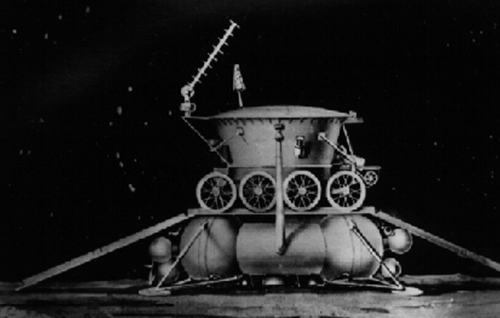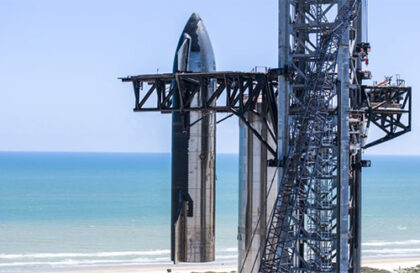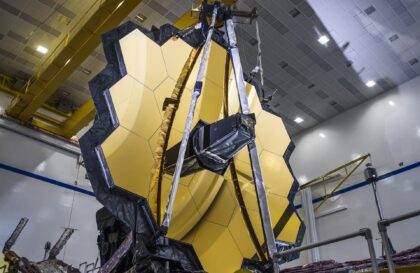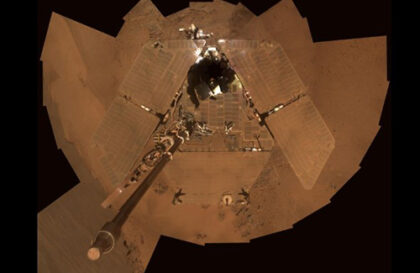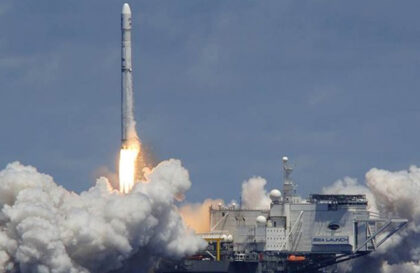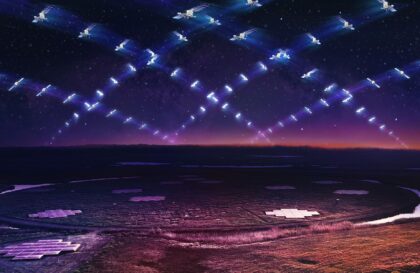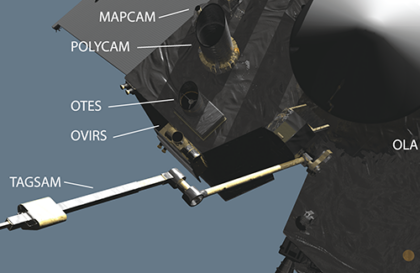Impactors
The Impactor, also known as E-1, was designed to impact (fall) into the visible part of the Moon. In January 1959, Luna 1 failed to impact the Moon as planned and became the first spacecraft to escape the gravitational field of the Earth and Moon.
Luna 1 impactor. Credit: Wikipedia (public source).
Then, in September 1959, Luna 2 reached the lunar surface, becoming the first artificial object on the Moon. From September 1958 to September 1959, six attempts were made to hit the Moon, but only one was successful.
Flybys
The flyby is a basic lunar spacecraft that does not require braking engines or a high-precision guidance system to land on the Moon. Such ships are known under the code names E-2 and E-3. Their main task is to transmit photographs to Earth.
In October 1959, Luna 3 flew around the Moon and sent back the first images of its dark side, inaccessible to observation from Earth. From October 1959 to April 1960, three attempts were made to fly around the Moon, but only one was successful.
A 1:1 scale model at the Memorial Museum of Cosmonautics in Moscow. Credit: Wikipedia (public source).
Soft landing platforms
For a soft landing on the Moon, the space module needs a rocket launcher to reduce speed and avoid damage. These devices can transmit photographs from the lunar surface, study lunar soil, and collect data on the lunar atmosphere.
The Luna series landers are known as E-6 or E-6M. From January 1963 to December 1966, only two were successful out of thirteen landing attempts.
In February 1966, Luna 9 (E-6 No. 13) successfully became the first space probe to land on another celestial body. It transmitted five black-and-white stereo panoramas to Earth, representing the first detailed lunar surface images.
After landing in the Ocean of Storms on February 3, 1966, the four petals that formed the spacecraft opened outward and stabilized the spacecraft on the lunar surface. (Image credit: NASA/GSFC/NSSDC)
Orbiters
To enter lunar orbit, orbital spacecraft require less energy and fuel than landers. In March 1966, Luna 10 became the first artificial satellite of the Moon. Orbital devices from the Luna series are known as E-6LF, E-6LS, E-6C or E-8LS.
From March 1966 to May 1974, out of eight launch attempts, six orbiters successfully reached lunar orbit.
Rovers
Model of Lunokhod vehicle. Credit: Wikipedia (public source).
More advanced landers could be equipped with wheeled robots to explore large areas of the Moon, not just the landing zone. Landers with Mars rovers from the lunar program were classified as E-8 (or E-8 when transliterated).
The first launch of the Lunokhod in February 1969 was unsuccessful. However, Luna 17 (November 1970) and Luna 21 (January 1973) were equipped with Lunokhods, which became the first wheeled robots to explore the Moon.
Lunokhod-1 covered a distance of 10.5 km in 322 days, transmitting more than 20,000 television frames and 206 panoramas. Lunokhod-2 operated actively for about four months and covered 42 km. Lunokhod 3 was designed for launch in 1977 but was never sent to the Moon due to rocket and budget issues.
Sample return
A more advanced lander can automatically collect samples of lunar rock, lift off from its surface, and deliver them to Earth. Return landers from the Luna program were classified as E-8-5 or E-8-5M.
The missions Luna 16 (September 1970), Luna 20 (February 1972), and Luna 24 (August 1976) brought samples of lunar soil to Earth. A total of 301 g (10.6 oz) of lunar soil was recovered from these three expeditions.
Luna 16 is on display at the K. E. Tsiolkovsky Museum of the History of Cosmonautics. Credit: Wikimedia Commons (public source).
When Luna 15 (July 1969) went to the Moon, the Apollo 11 mission was already there. By the time Neil Armstrong and Buzz Aldrin successfully landed, Luna 15 had begun its descent but ended up crashing into a mountain.
Banner image: Artist’s conception of the Lunokhod rover about to descend ramps from the landing module. Credit: NASA History Office
Image credit:
https://apod.nasa.gov
https://en.wikipedia.org
https://en.wikipedia.org
https://nssdc.gsfc.nasa.gov
https://commons.wikimedia.org
https://en.wikipedia.org
